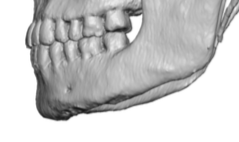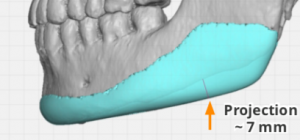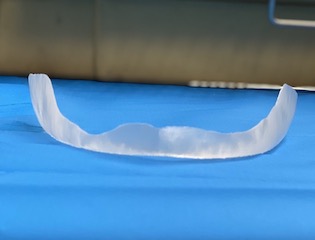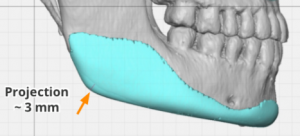Jaw reduction, often called V line surgery, is a popular facial reshaping operation and is done by several different techniques. But no matter how it is done it is not an easy operation due to the limited visibility working through intraoral incisions underneath the masseter muscle and around the pathway of the inferior alveolar/mental nerves. As a result it is a surgery that is prone to variety of postoperative aesthetic issues which include asymmetries, bony irregularities and over reduction. (for the patient’s desired aesthetic effects)
While primary jaw reduction surgery is tough enough, revision of it can be even tougher. Scar tissue and the limited access provide obstacles but improvements can usually be done. But the one aesthetic complication that can not be improved by any type of bony work is over reduction.
Too much jaw angle bone removal combined with inferior border/chin asymmetries requires the additional of structure for correction. This can only be done by the addition of implants which must be custom designed due to the variable shapes of the bone and the need for symmetry between two always different sides. Trying to patch any form of standard implant materials is fraught with just creating a new set of asymmetries and irregularities.




The placement of these small custom jawline implants require full elevation/release of the entire jawline tissues which is most difficult back long the jaw angles due to the scarred masseter muscle attachments. This release is most importantly done along the inferior border since this is where jaw reduction/V line surgery has exerted much of its effects. This allows the implant to fit along the inferolateral border of the jawline. Complete release of the attachments is necessary so the implant lays passively in its designed position on the bone.
Dr. Barry Eppley
Indianapolis, Indiana






